Get ready for SEO auditing with our “18 Effective Step SEO Audit Checklist in 2023”! ⚡This comprehensive guide is designed to boost organic traffic on your website, improve performance, and enhance the user experience. With a systematic approach, it aims to:
- Unveil hidden technical issues.
- Strengthen your keyword strategy.
- Boost content quality and relevance.
- Enhance page load speed and mobile friendliness.
- Finally, secure your website against potential threats.

Our checklist is a roadmap directing your efforts toward creating a stellar online presence. Imagine spotting a rise in bounce rates through your Plerdy UX & SEO analysis, causing your blog to drop in search rankings. Following our detailed SEO audit checklist, you can pinpoint the exact issues causing the rise – maybe slow page load times or poor mobile optimization – and tackle them head-on. With each step you complete, your website moves closer to optimal performance. Stay tuned, and let’s transform your website with the “18 Perfect Steps SEO Audit Checklist in 2023”! ⚡
What is an SEO Audit?
An SEO audit represents a systematic website examination, focusing on core parameters to improve its visibility on search engines. Here’s a basic SEO audit checklist:
- First, evaluate the website’s overall structure and design.
- Examine the quality and relevance of on-page content.
- Scrutinize keyword optimization and metadata.
- Test loading speed and mobile friendliness.
- Inspect internal and external linking strategies.
- Finally, analyze the website’s security features.
Let’s take the niche of online retail fashion. During the audit, each product page is examined meticulously, ensuring images are tagged with descriptive alt-text, unique and engaging product descriptions, and URL structure follows a consistent, logical pattern. In addition, particular attention is paid to the website’s usability – for instance, the checkout process is streamlined and intuitive. All these efforts are targeted at making the website more appealing to search engines and humans alike – and by extension, ranking higher on search result pages. The result of an SEO audit is a clear roadmap that leads to improved visibility, increased traffic, and better conversions.
Types of SEO Audits
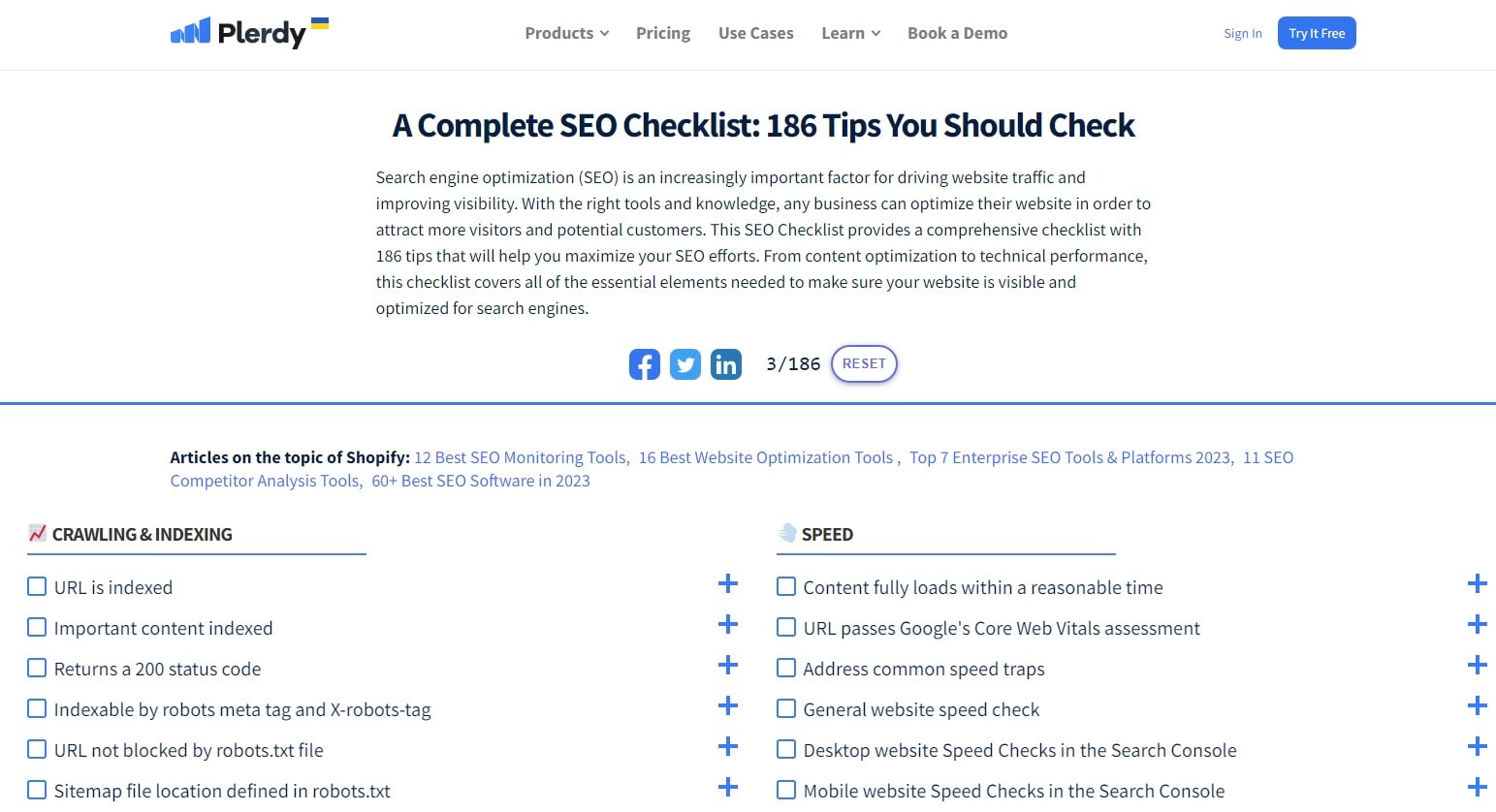
In the expansive realm of SEO, audits come in various types, each aimed at scrutinizing specific aspects of a website. Here’s a simplified rundown:
- On-page SEO audits concentrate on elements visible to website visitors, like headings, images, and text.
- Technical SEO audits delve into backend elements, ensuring proper indexing and checking page load speed.
- Off-page SEO audits revolve around building a robust backlink profile and managing your brand’s reputation.
A prime example can be found in the travel industry. Consider a website that provides travel tips and booking options. An on-page audit would scrutinize the quality of travel tips, ensuring the text is informative, engaging, and laden with relevant keywords. The technical SEO audit would evaluate the efficiency of the booking system, security features, and page load times, ensuring a smooth user experience. Meanwhile, an off-page audit might focus on building connections with travel bloggers and tourism websites for link building, thus strengthening the site’s authority. Armed with a comprehensive SEO audit, a website can effectively navigate the digital landscape, increasing visibility and bolstering user engagement. A website can optimize its position in the dynamic arena of search engine rankings through a strategic combination of on-page, technical, and off-page audits.
Why is an SEO Audit Important?
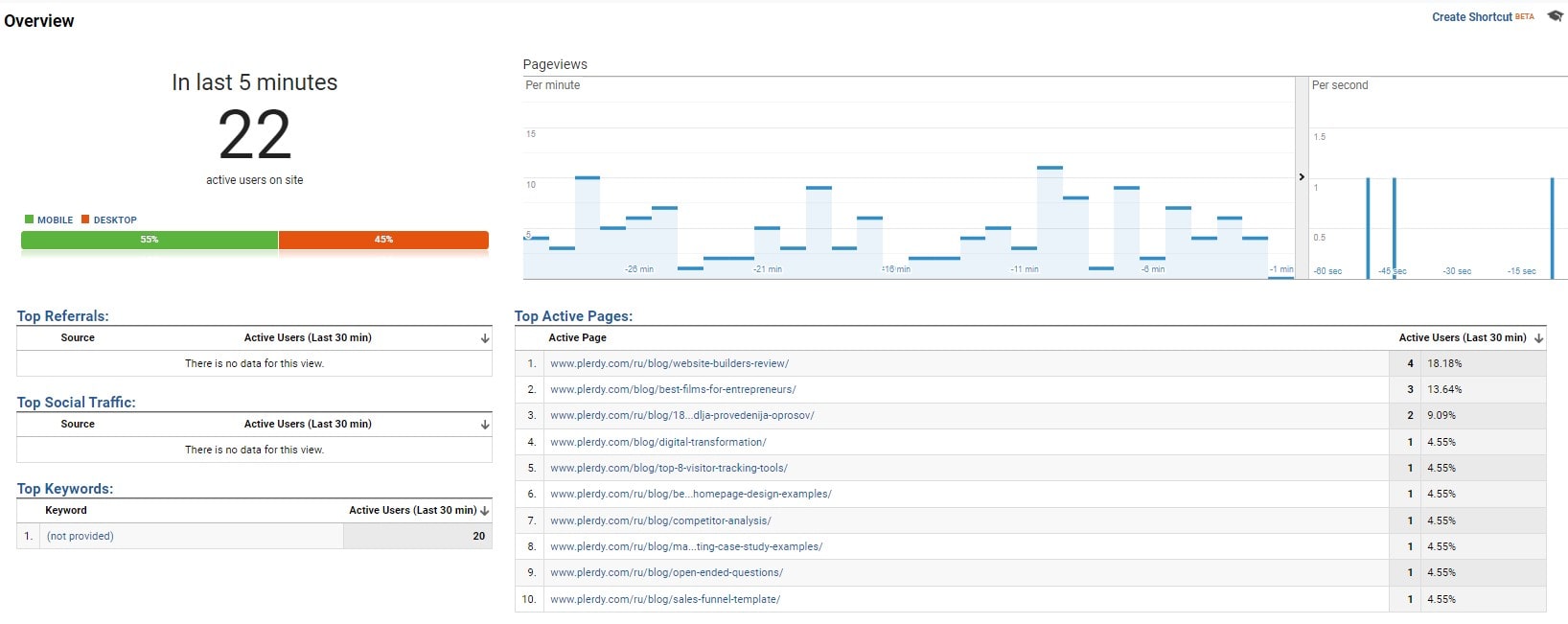
In online businesses, an SEO audit is akin to a health check-up for your website, offering valuable insights for enhancing your online presence. By unearthing hidden issues and suggesting actionable solutions, an SEO audit facilitates the optimization of your website, in turn bolstering its visibility on search engines. The audit’s significance spans multiple facets:
- Identifying technical glitches that hinder user experience.
- Exposing potential security vulnerabilities.
- Unveiling content gaps and opportunities for enhancement.
- Uncovering weak points in your backlink profile.
Consider a website selling artisan coffee. An SEO audit could reveal that certain product pages aren’t optimized for relevant keywords, or the website’s security features are outdated. It might also expose slow page load times, deterring potential customers. The website could incorporate keywords into product descriptions post-audit, tighten its security, and enhance page load times. Moreover, the audit could highlight opportunities for content enhancement, creating a blog section providing coffee-making tips and bean selection guides, thus driving more traffic and engagement. An SEO audit isn’t just important. It’s indispensable for staying competitive in the ever-evolving digital landscape, driving traffic, improving user experience, and maximizing conversions.
1. Check Your Website’s Visibility in Search Engines
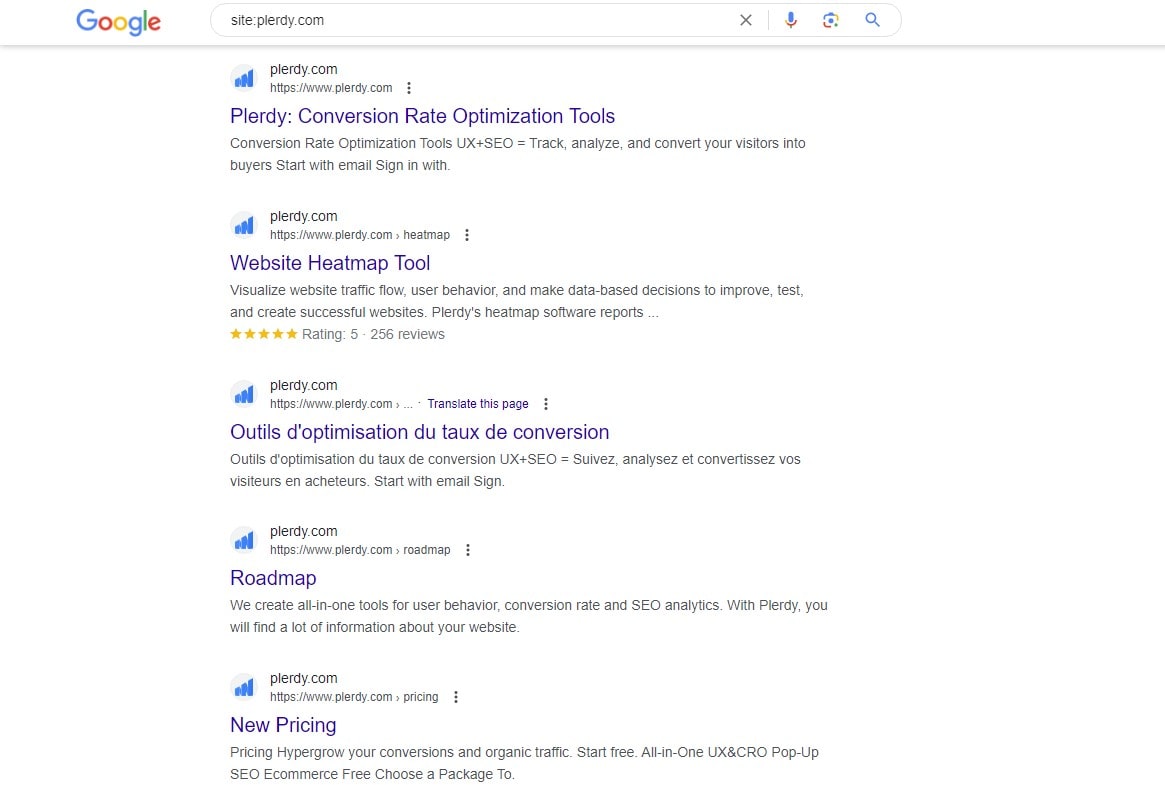
Monitoring your website’s visibility in search engines is crucial in any SEO audit checklist. It’s about examining how your website fares in search results – are your pages popping up for relevant queries or lurking in the shadows? Let’s delve into the process.
Firstly, utilize tools like Google Search Console to explore your website’s search appearance. It’s a treasure trove of data revealing which queries lead users to your site and the click-through rates for these queries. Similarly, SERP (Search Engine Results Page) checkers provide a real-time snapshot of your site’s ranking for specific keywords.
Take the niche of artisanal coffee, for example. If your website is about hand-roasting the best coffee beans, you’d want to ensure you’re visible when users search for terms like “artisan coffee beans” or “hand-roasted coffee.”
Next, you’ll want to:
- Scrutinize indexed pages – Use the “site:” operator in Google search, followed by your domain. The result reveals the number of your pages Google has indexed. A discrepancy between this number and your pages might indicate a crawling issue.
Remember, each page is a potential entry point for users. By keeping a close eye on your visibility in search engines, you ensure that every page of your website serves as a vibrant, accessible beacon for potential visitors. This check, an essential item in your SEO audit checklist, sets the stage for a search engine-friendly site.
2. Analyze Your Website’s Technical SEO
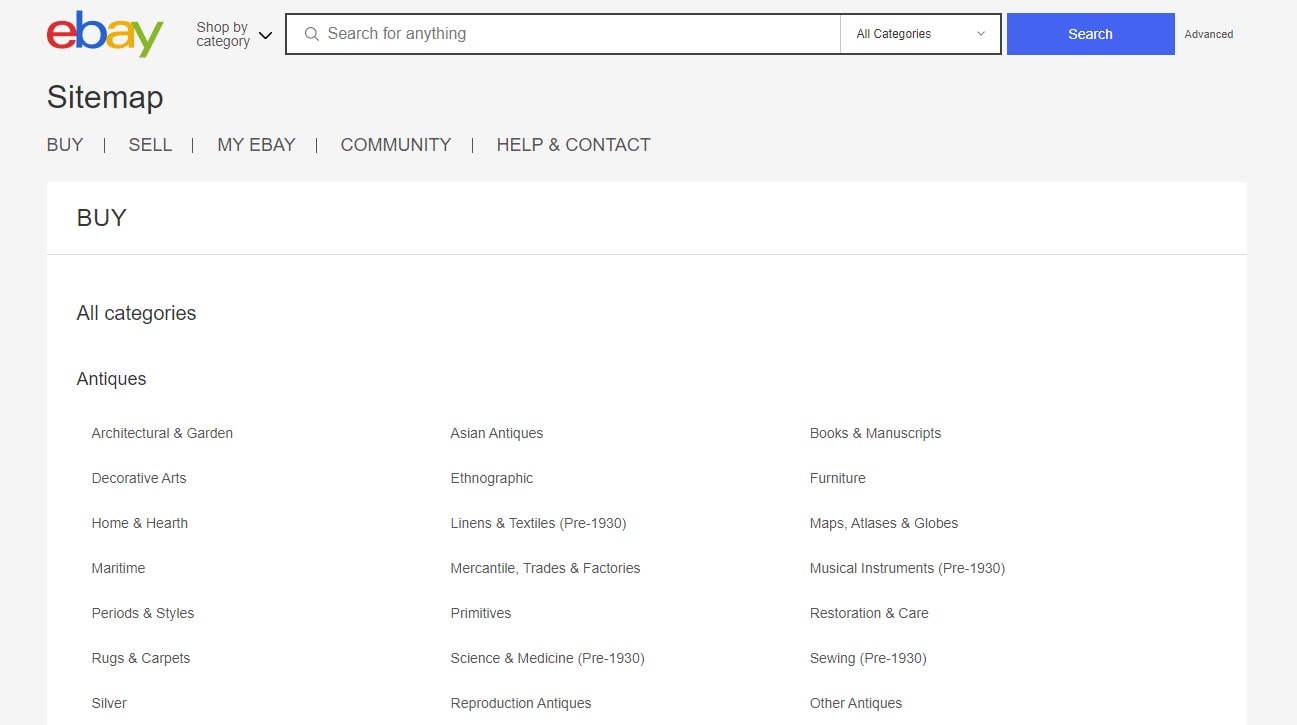
Deepening your website’s technical SEO is a pivotal step in the SEO audit checklist. It’s akin to performing a health check on the underlying structure of your website, ensuring it’s built on a solid foundation. So let’s peel back the layers to understand this better.
Picture your website as a thriving online store selling handmade candles. Your technical SEO is like the store’s layout – it should allow customers to browse and buy your candles effortlessly. The same applies to search engines; they should be able to crawl, index, and rank your pages without stumbling over technical hurdles.
Here’s what you need to keep an eye on:
- XML Sitemap: This blueprint guides search engines to all important pages on your site. Ensure it’s up-to-date and submitted to Google Search Console.
- Robots.txt: It directs search engines where they can or can’t go. Verify no vital pages are being blocked.
- 404 Errors: Broken links disrupt the user experience and crawl efficiency. Hunt them down and fix or redirect them.
By conducting a comprehensive technical SEO audit, you’re paving the way for search engines to navigate your website smoothly. This step is about making your site’s pages easily accessible, boosting overall SEO performance.
3. Review Your Website’s On-Page SEO

Tackling your website’s on-page SEO is a crucial step in your SEO audit checklist. This process revolves around optimizing individual pages on your site to rank higher and attract more relevant traffic from search engines. So let’s unpack this concept further.
Consider running a website that caters to gourmet cooking recipes. Your on-page SEO is like the recipe itself – it should tell search engines (and users) what the page is about. Ingredients like title tags, meta descriptions, and keyword use tell a cohesive story, ensuring your pages rank for terms like “homemade pasta recipe” or “best sourdough bread.”
Your on-page SEO review should encompass the following:
- Title Tags: These should be unique, descriptive, and contain relevant keywords.
- Meta Descriptions: These should accurately summarize the page content, compelling users to click.
- Keyword Use: Your primary keyword should appear in your content’s first 100-150 words. But avoid keyword stuffing.
- Image Alt Text: Ensure all images have alt text that describes the image, as it helps search engines understand the content.
By fine-tuning these elements, you’re effectively telling search engines exactly what each website page is about. So this step in the SEO audit checklist is all about perfecting your recipe for search engine visibility, ultimately boosting your site’s performance.
4. Inspect Your Website’s Off-Page SEO
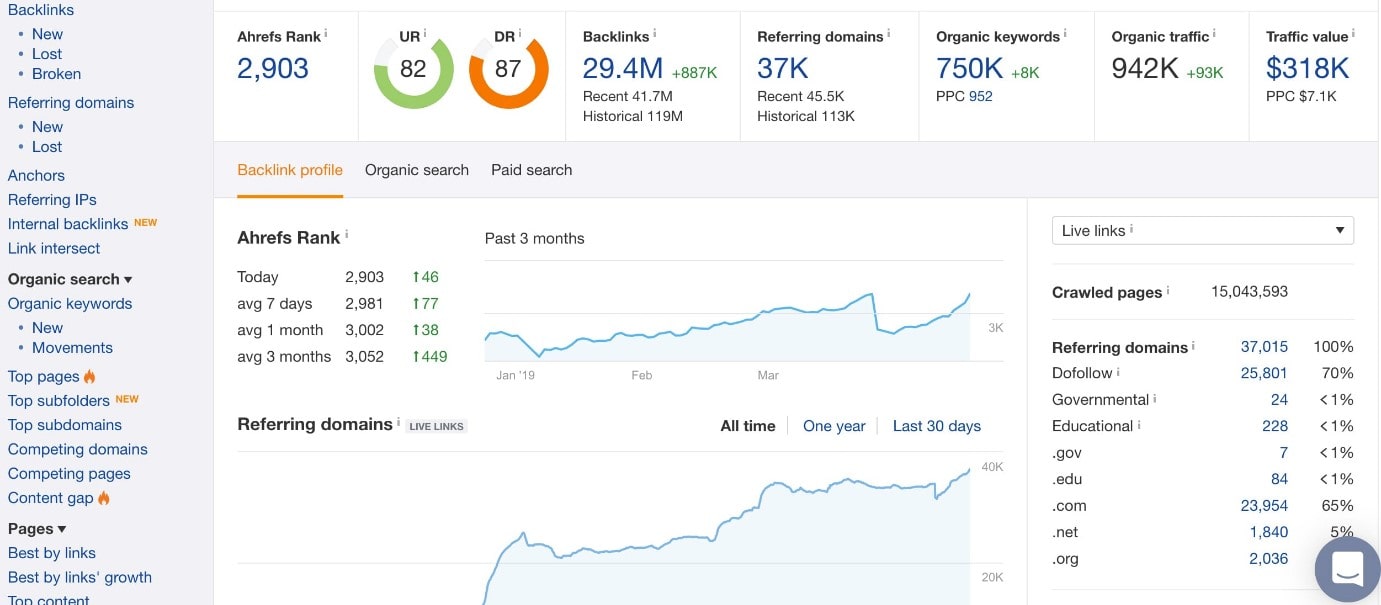
Investigating your website’s off-page SEO is essential to your SEO audit checklist. This process is about enhancing your site’s reputation and authority in the eyes of search engines. So let’s delve into this a bit more.
Imagine operating a fitness blog. Your off-page SEO is like your reputation in the fitness community – the more recognized and trusted you are, the more likely search engines will rank your pages for queries like “effective home workouts” or “nutritious post-workout meals.”
To effectively scrutinize your off-page SEO, it’s essential to:
- First, monitor Backlinks: High-quality, relevant backlinks boost your site’s authority. Next, use tools like Ahrefs or SEMrush to examine your backlink profile.
- Analyze Social Signals: While not a direct ranking factor, a strong social media presence can indirectly improve SEO. Gauge the engagement on your social platforms.
- Check Online Mentions: Monitor how often your brand gets mentioned online, outside of your website and social media. This can help assess your reputation.
- Evaluate Guest Posting: Guest posts on reputable sites can increase your brand’s visibility and create valuable backlinks.
By focusing on these off-page SEO elements, you’re effectively enhancing your website’s authority and trustworthiness. In addition, this stage in your SEO audit checklist helps your SEO by developing a strong reputation beyond your site.
5. Evaluate Your Website’s User Experience

In an SEO audit, one of the most important steps is to evaluate your website’s user experience (UX). User experience is like a friendly guide — it ensures that visitors to your website find exactly what they’re searching for easily. To illustrate, consider an online bookstore. You’d want users to browse through genres effortlessly, select a book, and purchase without hiccups.
Here’s how to enhance your site’s UX:
- Site Navigation: Ensure that your website’s structure is straightforward and intuitive. Visitors should be able to seamlessly navigate from one page to another, like flipping through book pages.
- Mobile Responsiveness: With most users accessing websites via mobile devices, your site must be mobile-friendly. Use Google’s Mobile-Friendly Test for this.
- Page Load Time: Slow-loading pages can lead to increased bounce rates. Use tools like PageSpeed Insights to check and improve load times.
- Engaging Content: Content should not only be informative but also engaging. Use visuals, bullet points, and short paragraphs to make your content more readable.
By optimizing UX, you’re not only enhancing your website’s SEO but also fostering visitor satisfaction. This step in the SEO audit checklist is about making your website a welcoming, easily navigable space that keeps visitors returning for more.
6. Analyze Your Site’s Mobile Responsiveness
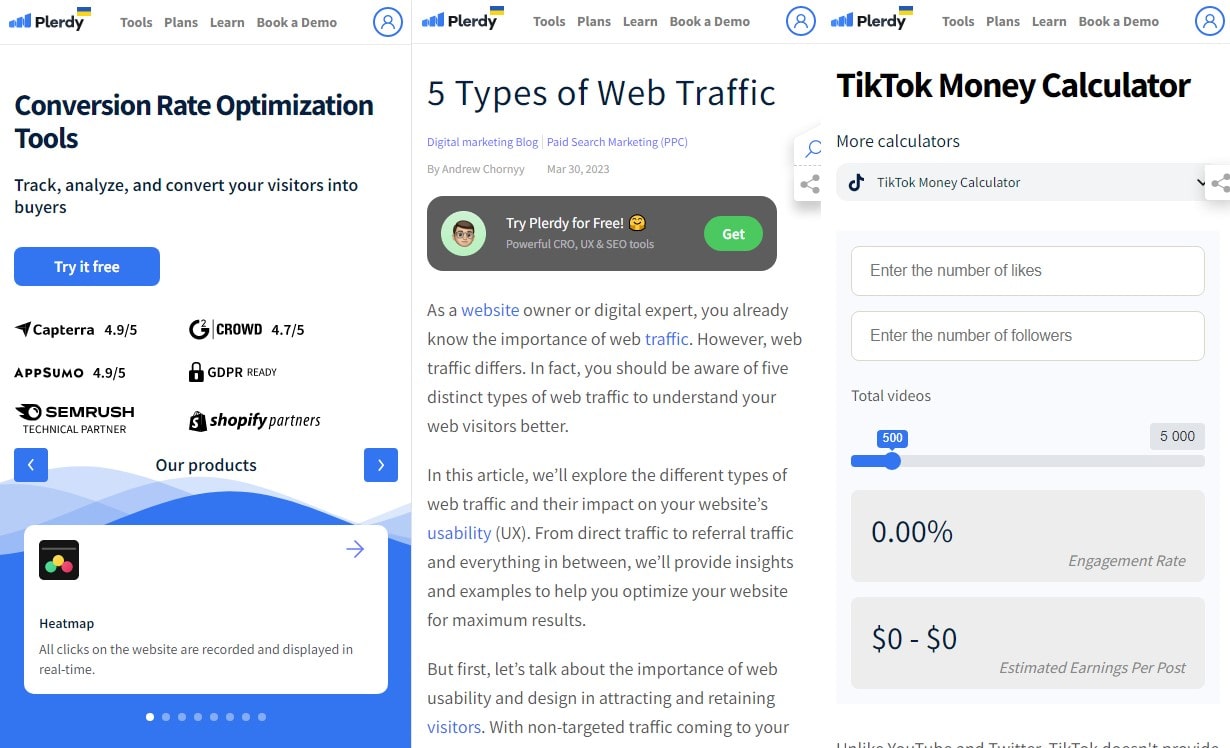
Evaluating your site’s mobile responsiveness is crucial to your SEO audit checklist. Consider your website to be an online magazine. Mobile responsiveness is akin to how comfortably readers can flip through your smartphone magazine.
In the era of smartphones, where most users access websites on their mobile devices, your site needs to display and function perfectly on smaller screens. A mobile-optimized site provides a better user experience, leading to longer session durations and lower bounce rates.
To assess your site’s mobile responsiveness, keep an eye on these points:
- Layout and Design: Make sure your site’s layout and design adapt to different screen sizes seamlessly.
- Font Size: Text should be easily readable without users having to zoom in.
- Tap Targets: Buttons and links should be large enough to tap comfortably on a small screen.
- No Horizontal Scrolling: Content should fit within the screen width, preventing horizontal scrolling.
You can use Google’s Mobile-Friendly Test to gauge your site’s responsiveness. By optimizing your site for mobile devices, you’re not only appeasing Google’s mobile-first indexing but also enhancing your site’s user experience. This step in your SEO audit checklist ensures your website is fully equipped to engage the mobile-centric audience of the digital age.
7. Check the Site’s Loading Speed
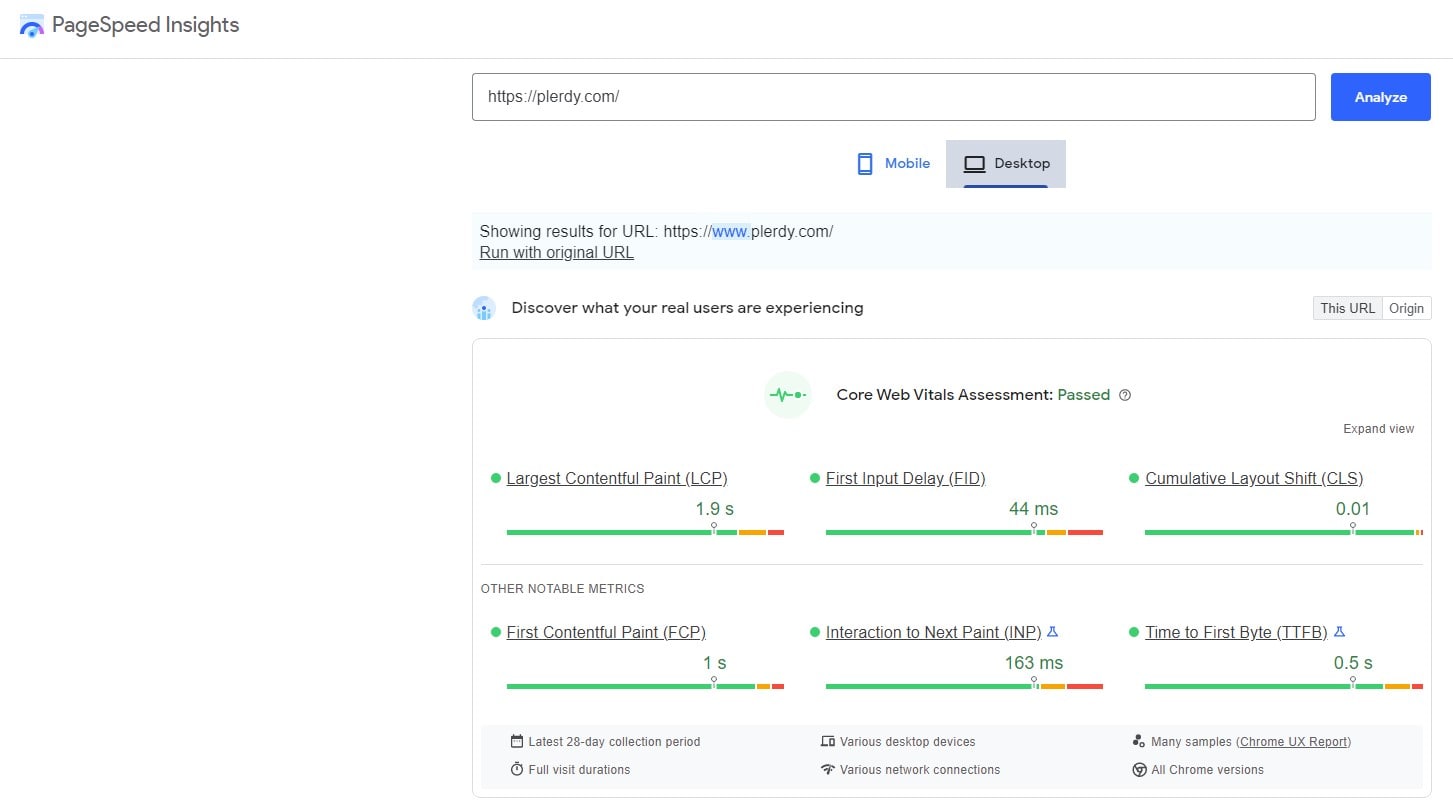
A closer look at your site’s loading speed is an integral step in the SEO audit checklist. Speed can be likened to the service at a gourmet restaurant – the faster the patrons get their meals, the happier they are, and the more likely they are to return.
In the digital landscape, slower page load times lead to higher bounce rates and lower user satisfaction. For instance, if an e-commerce site takes less time to load, potential customers might abandon their carts and turn to quicker competitors.
Here are some areas to focus on when assessing site speed:
- Image Optimization: Large, high-resolution images can slow down your site. Ensure images are compressed and optimized for faster loading.
- Minimize HTTP Requests: Each element on your page requires a separate HTTP request. Minimize these to speed up page loads and enable on the server HTTP/3.
- Enable Browser Caching: This allows repeat visitors to load your site faster as some elements are stored in their browser.
- Remove Unnecessary Plugins: Having an excessive number of plugins can slow down your website. Therefore, only the most necessary ones should be kept.
Use tools like Google’s PageSpeed Insights or GTmetrix to review your site’s speed. Optimizing your site’s loading speed with Cloudflare can enhance user experience and boost rankings. This SEO audit step of the checklist ensures the website is lightning-fast, keeping users interested and delighted.
8. Verify Your Website’s Security
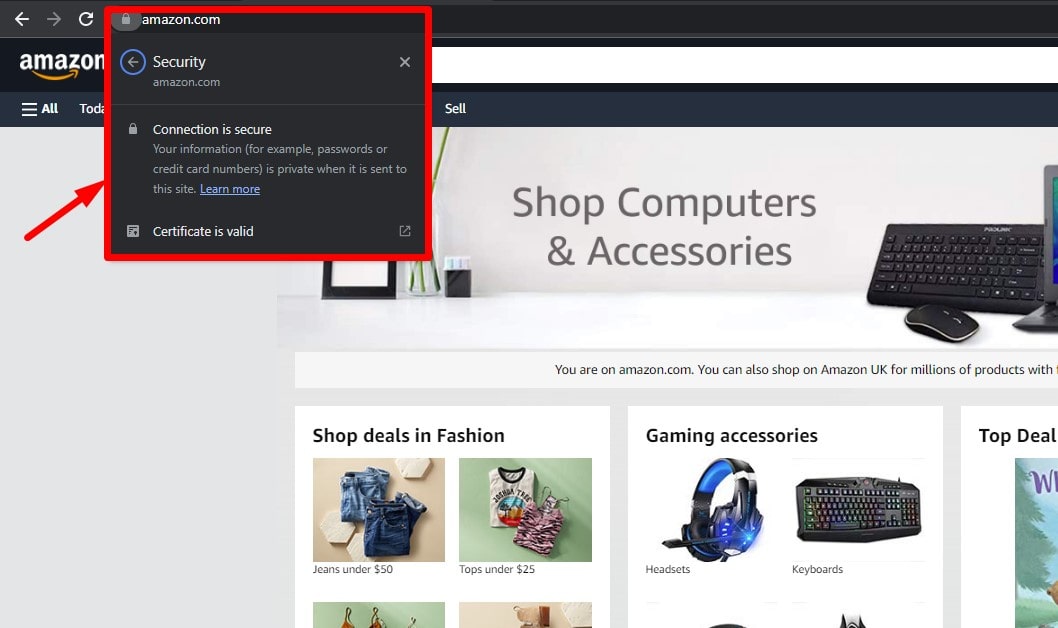
Securing your website is an essential step in the SEO audit checklist. Websites, like banks, must have robust security measures in place. If your bank’s vault was easily accessible, you wouldn’t trust them with your money, would you? The same concept applies to websites. Users won’t trust, or revisit, a site that doesn’t prioritize security.
Let’s illustrate this with an online bookstore as an example. If your bookstore’s site needs robust security, customers can enter their credit card details to purchase your books. But, unfortunately, that hesitation can lead to lost sales and a damaged reputation.
Key areas to focus on in website security include:
- SSL Certificate: Ensure your site uses HTTPS, not HTTP. The ‘S’ stands for secure – it encrypts data to protect it from hackers.
- Software Updates: Regularly update your CMS, plugins, and other software to safeguard against potential vulnerabilities.
- Strong Passwords: Implement a strong password policy for all backend access to protect against brute-force attacks.
- Two-Factor Authentication (2FA): Add an extra layer of security by requiring a second form of verification for logins.
These SEO audit checklist items make your website as secure as a fortress, boosting user and search engine trust. A secure site is trustworthy, and trust is the currency of SEO.
9. Evaluate Your Backlink Profile
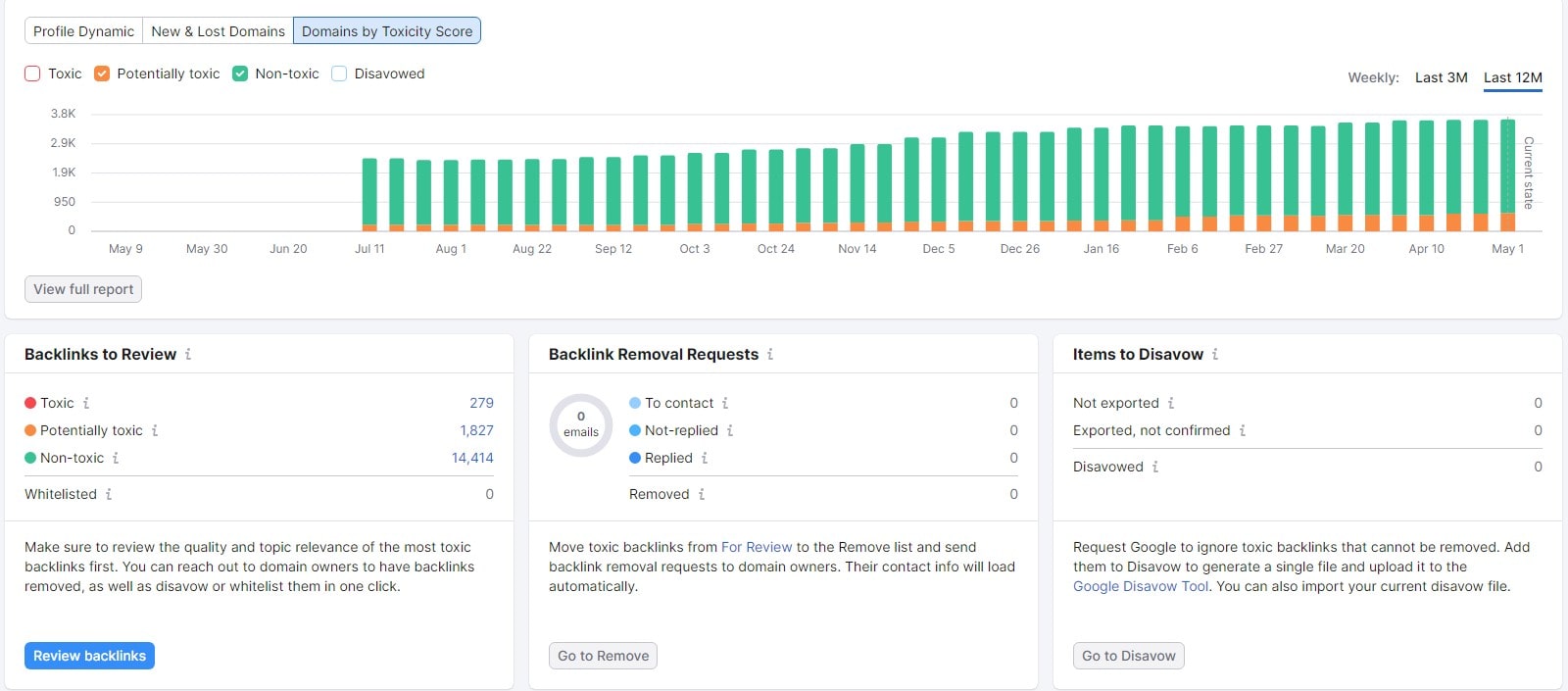
An SEO audit would only be complete by delving into your website’s backlink profile. Backlinks – the roads leading to your website from other sites – are crucial to your page’s credibility. For example, imagine running a successful craft beer brewery. Your brews are top-notch, but the glowing reviews and referrals from established beer connoisseurs drive customers to your door.
Navigating through your backlink profile is a critical step in an SEO audit. Remember, not all backlinks are created equal. For example, a link from a respected food and beverage website carries more weight than one from a rarely visited blog about cats.
Consider these aspects in your backlink review:
- Backlink Quality: Check the domain authority of linking sites. High-authority sites boost your SEO score.
- Relevance: Ensure backlinks come from sites related to your niche.
- Anchor Text: Review the words used in the hyperlink. They should be relevant to your content rather than over-optimized.
- Link Type: Favor dofollow links pass on SEO juice over nofollow links.
Treat your backlink profile like a garden – cultivate high-quality links, weed out the low-quality ones, and you’ll see your page rise in search engine rankings.
10. Analyze Your Content Quality
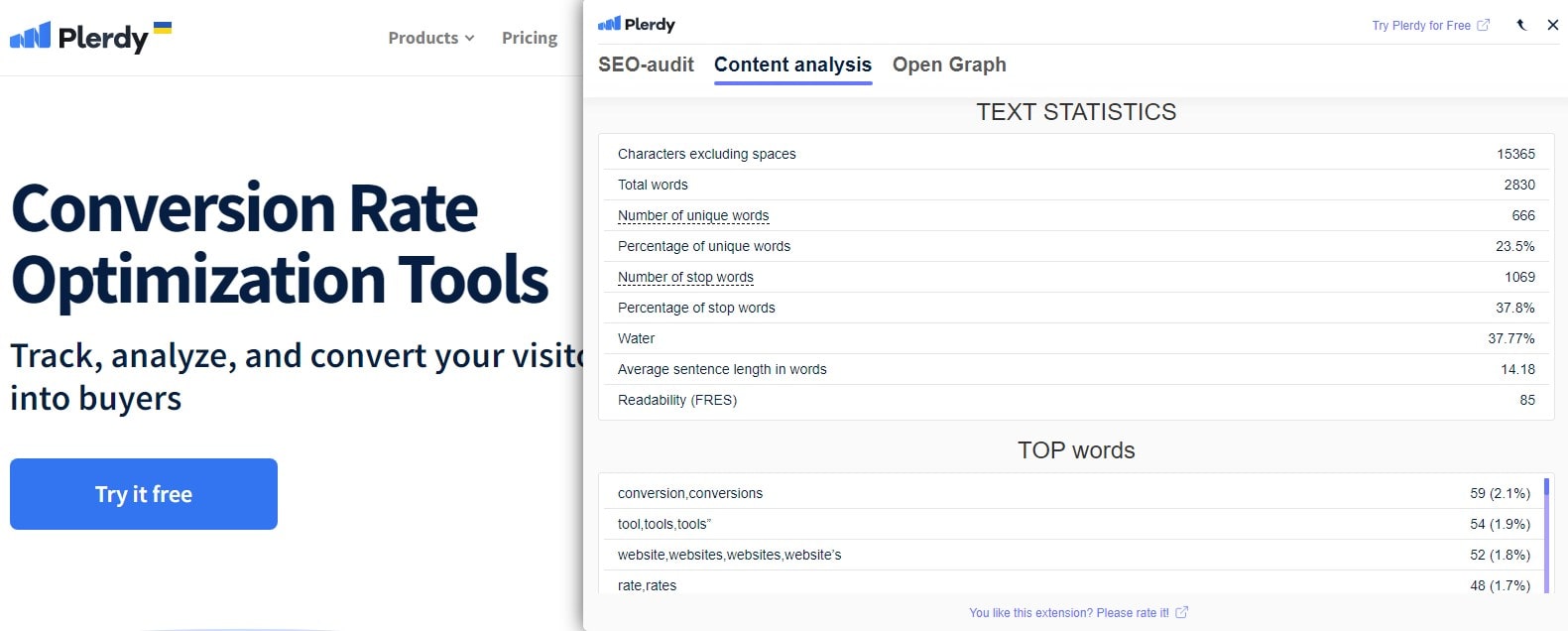
Imagine your website is a gourmet restaurant – your content is the show’s star, the mouthwatering dishes that keep customers returning for more. The quality of your content directly impacts your SEO, making it a focal point in any SEO audit.
It’s critical to scrutinize every page and every word. Don’t skip a beat -ensure your content is engaging, valuable, and relevant to your target audience. For instance, if you’re selling artisanal chocolates, your content must captivate chocolate enthusiasts, offering them rich insights and tempting product descriptions.
Step up your content analysis by ticking off this checklist:
- Relevance: Does your content align with your audience’s interests and business niche?
- Originality: Confirm that your content is unique and not duplicated from other sources.
- Clarity: Ensure your content is easy to read and understand – no jargon, no fluff.
- Engagement: Look for signs of audience interaction – comments, shares, and likes.
Remember, there’s always room for improvement. Pinpoint areas need a touch-up, whether updating outdated information, enriching thin content, or optimizing for specific keywords. But keep your content fresh and exciting; you’re bound to draw in a crowd, pleasing your audience and search engines.
11. Review Your Social Media Integration
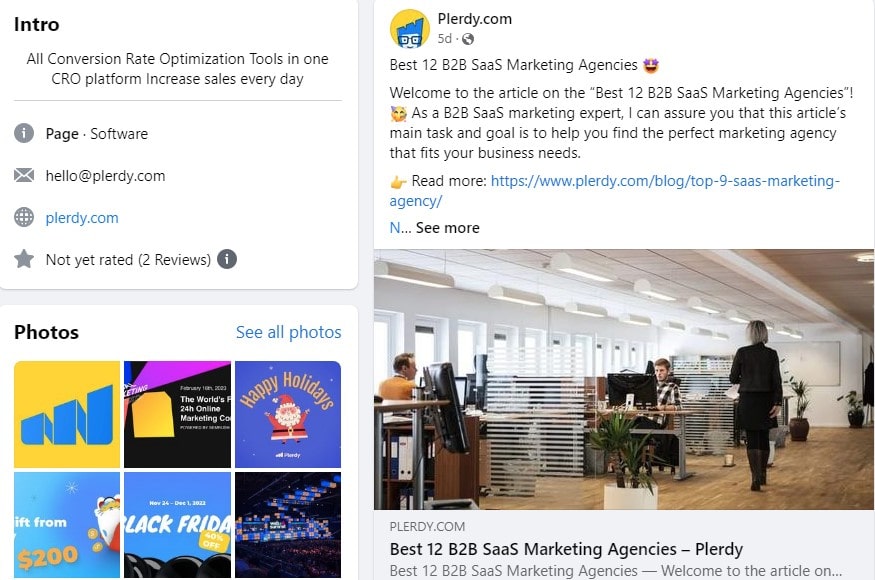
In digital marketing, social media isn’t just a platform for memes and vacation photos — it’s a powerful tool that can boost your SEO if wielded wisely. The step to integrating social media into your website can feel like navigating a labyrinth, but it’s a task you can’t brush aside.
Suppose you run a boutique clothing store. You have Instagram posts showcasing your latest summer collection and tweets sharing fashion tips. That’s where the SEO audit enters the stage.
Here’s a checklist for your social media integration review:
- Visibility: Make sure social media icons are prominent on every website page.
- Functionality: Ensure the icons link directly to your active social media profiles.
- Sharing: Ensure visitors can easily share your content on social media.
Social media content should reflect your website’s content, creating a harmonious online presence. So tie the knot between your site and social media platforms—let your trendy summer dresses dazzle your store’s visitors and Instagram followers.
Remember, in the grand theatre of SEO, your website is the main act, but social media is the supporting cast that can steal the show. Tight integration can ramp up your website’s traffic, encouraging higher search engine rankings.
12. Examine Your Local SEO Presence
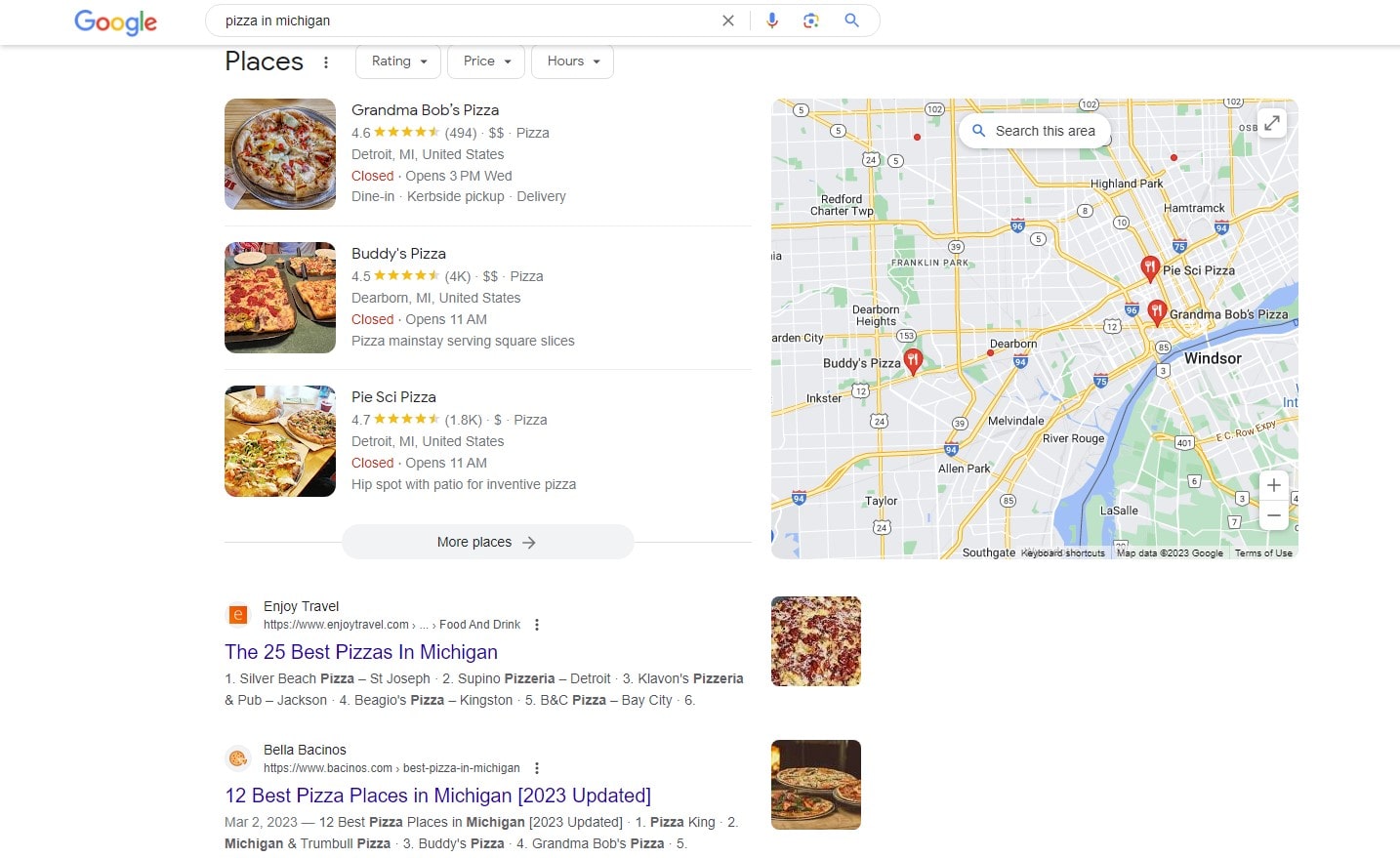
The power of local SEO is often underestimated—it’s the lighthouse guiding customers through a sea of options right to your doorstep. Let’s illustrate it with a coffee shop. You serve the best cappuccinos in town, but does your online presence reflect this? An SEO audit is your ticket to making a splash on the local scene.
Here’s your local SEO presence checklist:
- Consistent NAP (Name, Address, Phone number) across all platforms.
- Accurate Google My Business listing.
- High-quality, local-specific content on your website.
Ensure your coffee shop’s name, location, and contact details remain unchanged across your website, social media, and other online listings. This consistency is the foundation of your local SEO, helping search engines and customers pinpoint your exact location.
Next, step up your Google My Business game. Display your menu, opening hours, and perhaps a tempting photo of your signature cappuccino. Finally, build up a solid base of content on your website that speaks to your local audience—blog posts about coffee culture in your town, perhaps?
Strengthening your local SEO presence is like brewing the perfect coffee—it takes time and patience, but the result is a rich, aromatic blend that leaves a lasting impression. The reward? You’ll be the first port of call for anyone seeking a caffeine fix in your locale.
13. Inspect Your Schema Markup and Structured Data
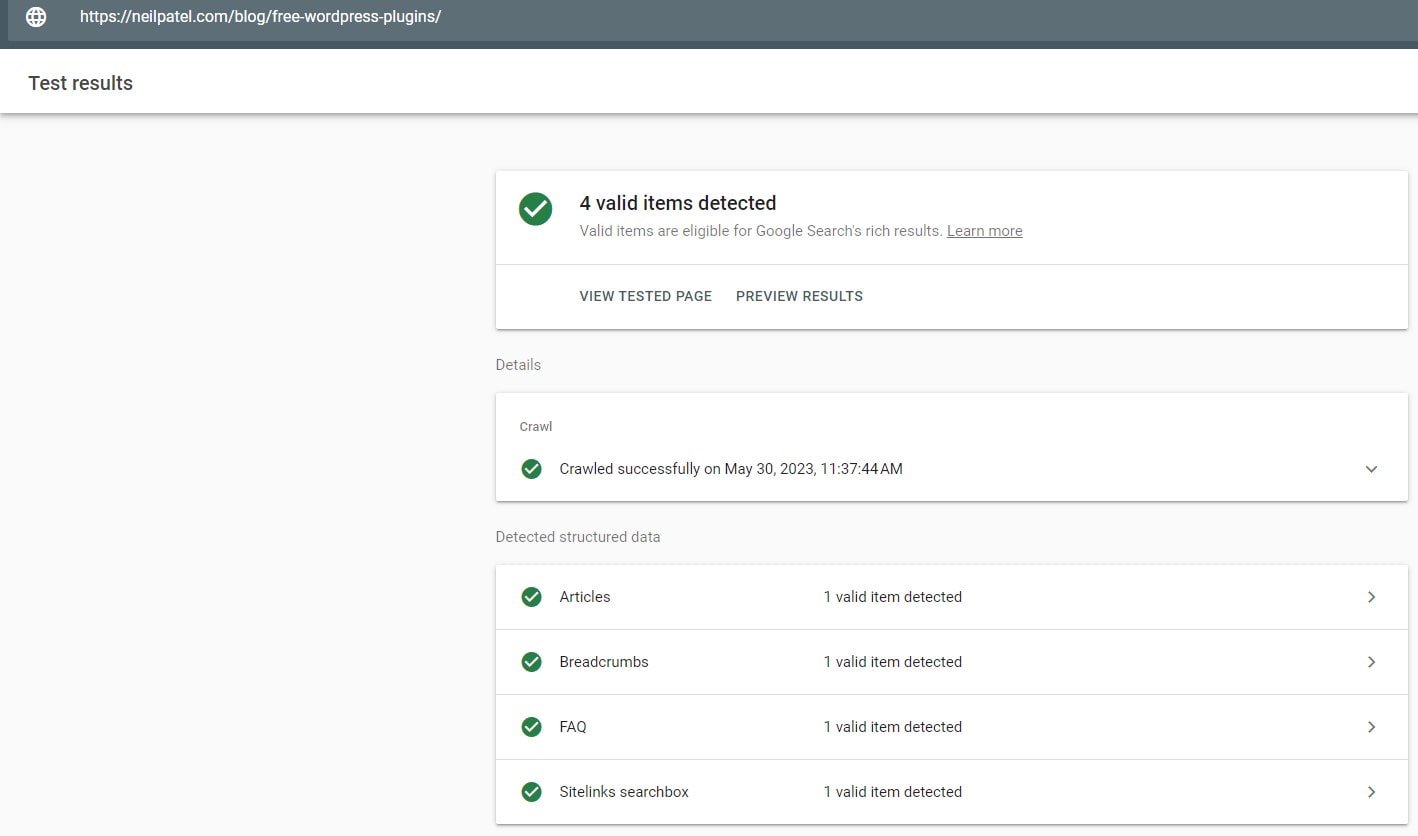
In the grand landscape of SEO, structured data often take a backseat—yet, they’re the unsung heroes that boost your page’s visibility in search results. Let’s delve into the realm of an online bookstore to illustrate this.
Schema markup is like a translator, helping search engines understand your content better. It’s the difference between search engines knowing you have a “book” on your page and knowing the “book” is a “first edition signed copy of the latest bestseller.”
Your structured data and schema markup checklist should include the following:
- Correct implementation of markup on your website.
- Schema markup for product details.
- The markup for reviews and ratings.
The first step in your SEO audit is to verify that your schema markup is implemented correctly. Ensure it’s not just present but also accurate and relevant to the content on your page.
For your bookstore, you should have a specific product schema for your books. This includes author, genre, publication date, and ISBN. Don’t overlook the power of reviews and ratings—they influence buying decisions. Include review schema to showcase them prominently in search results.
Sculpting your schema markup is like curating the perfect book display—it requires attention to detail and understanding your audience. But once you’ve mastered it, it will spotlight your page amidst the competition.
14. Audit Your Keywords Performance
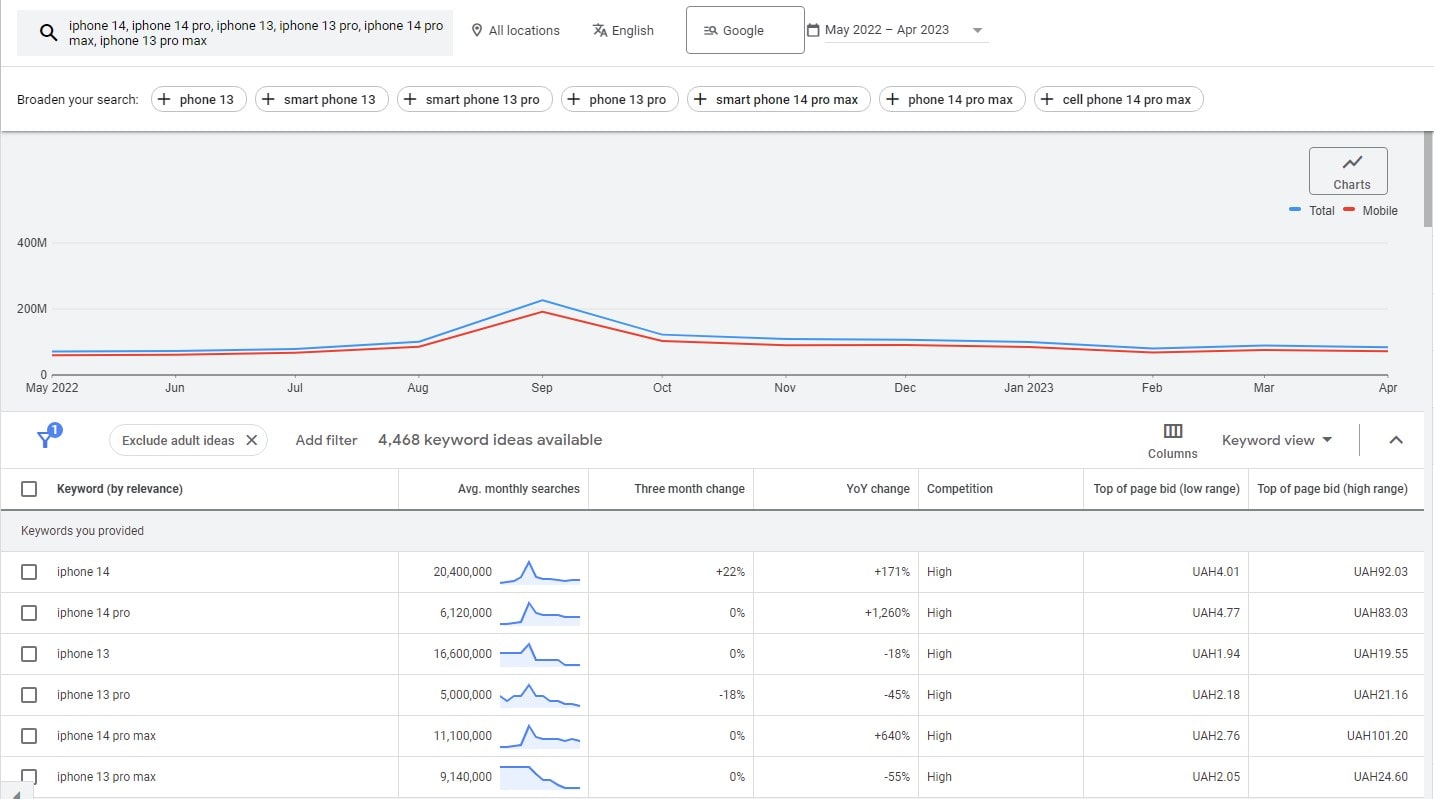
Imagine running a niche online bakery. You’ve poured your soul into creating delectable treats and carefully chosen keywords to attract the right audience. But without auditing your keywords’ performance, it’s like baking without taste-testing—likely to end in disappointment.
To kick off your SEO audit, you need a comprehensive checklist. Consider these points:
- Monitor keyword rankings.
- Evaluate traffic trends.
- Review conversion rates.
Start with monitoring your keyword rankings. More than scatter keywords throughout your website are needed. For example, ensure your “gluten-free brownies” or “vegan cupcakes” reach the top spots in search results. If they’re languishing in the depths of page two or beyond, it’s time to reassess your strategy.
But, conversely, it might be time to re-evaluate if “sugar-free cookies” aren’t drawing a crowd.
Finally, review your conversion rates. Keywords aren’t merely about attracting visitors—they should lead to sales. If “freshly-baked bread” gets clicks but no purchases, it’s a sign to tweak your approach.
Auditing your keywords’ performance isn’t just an SEO step—it’s a vital practice to refine your content and ensure you’re hitting the sweet spot with your audience.
15. Review Competitor SEO Strategies
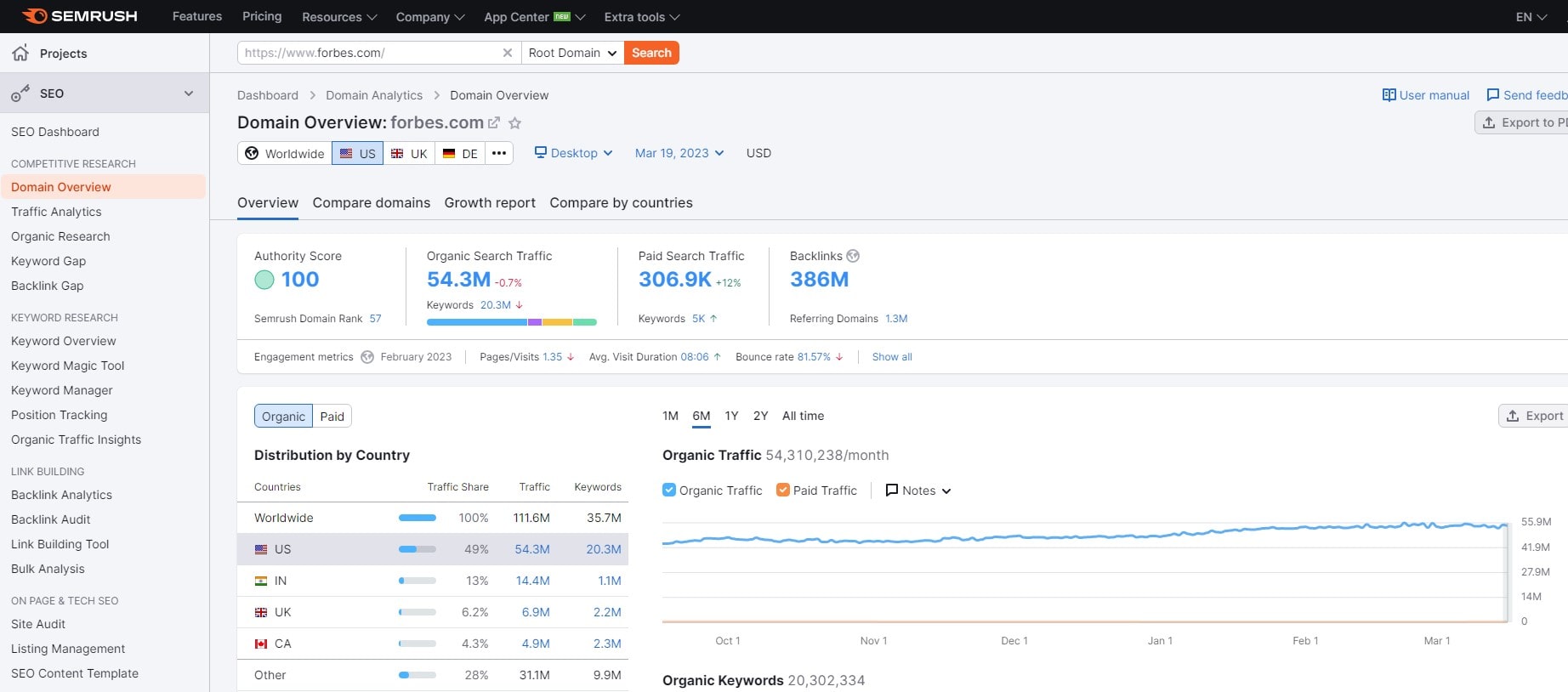
Imagine running an online plant shop in the thriving world of indoor gardening. Examining your competitor’s SEO strategies is crucial to stay ahead in this green race. Here’s a simple checklist to guide you through this critical SEO audit step:
- Identify your competitors.
- Analyze their keyword use.
- Review their backlink profile.
Start by identifying your direct competitors – those who sell the same variety of indoor plants. Then, please pay close attention to their website structure, content, and user experience. It can reveal valuable insights into their SEO strategy.
Next, analyze their keyword use. For instance, if they rank high for “easy-care houseplants,” maybe it’s time for you to create content around low-maintenance greenery. Also, watch for long-tail keywords, which can offer less competition and more qualified traffic.
Lastly, review their backlink profile. Websites linking to your competitor’s page can provide a roadmap to potential partnerships for your backlink strategy.
While it’s tempting to replicate a successful competitor’s SEO strategy, remember to carve out your niche. Use your competitors as a roadmap, but don’t lose sight of your unique selling points – a wider variety of plants, more comprehensive care guides, or superior customer service. That’s how you’ll thrive in the digital jungle.
16. Check Compliance with Latest SEO Trends and Updates
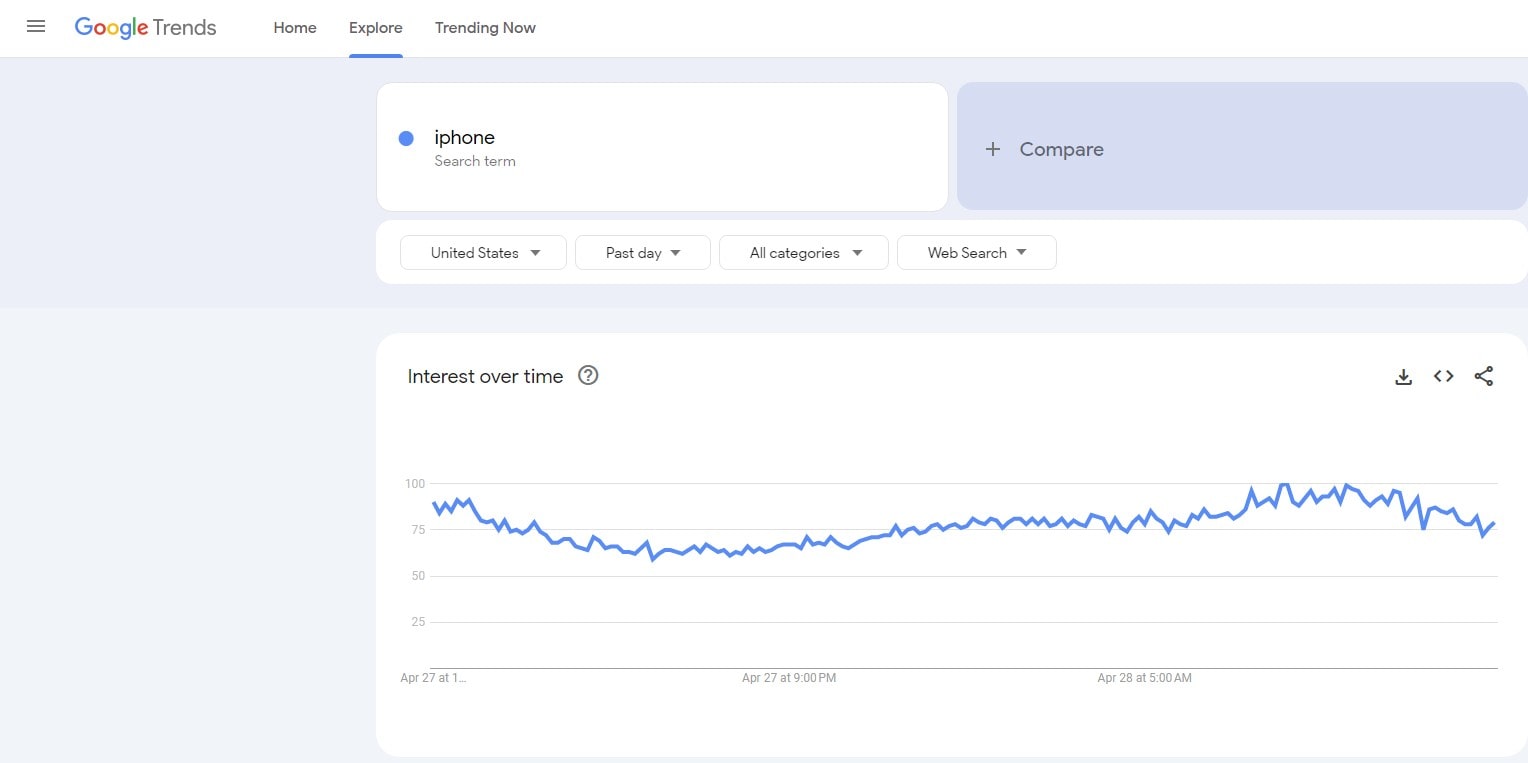
In the dynamic landscape of SEO, keeping up-to-date with the latest trends and updates is paramount. For example, let’s imagine you’re running a digital bookstore. A vital SEO audit step involves ensuring your website aligns with current SEO practices. Here’s a quick checklist:
- Monitor changes in algorithm updates.
- Adapt to emerging SEO trends.
- Implement changes accordingly.
Stay vigilant about changes in algorithm updates. Google frequently rolls out updates that can significantly affect your page rankings. For instance, the shift towards mobile-first indexing or the emphasis on core web vitals impacts how your online bookstore should be optimized.
Tune into emerging SEO trends. For example, voice search optimization and AI-driven SEO are gaining traction – is your website ready to cater to these advancements? For example, incorporating long-tail keywords can optimize your website for voice search, as people tend to use full sentences when speaking.
Once you’ve gathered these insights, it’s time to roll up your sleeves and implement changes. This might involve tweaking your metadata for better mobile optimization or enhancing page loading speed to improve user experience.
SEO is a never-ending journey of adaptation and improvement. Staying abreast of the latest trends and swiftly implementing necessary changes is key to securing a front-row seat in the digital bookstore arena.
17. Create an SEO Action Plan Based on the Audit
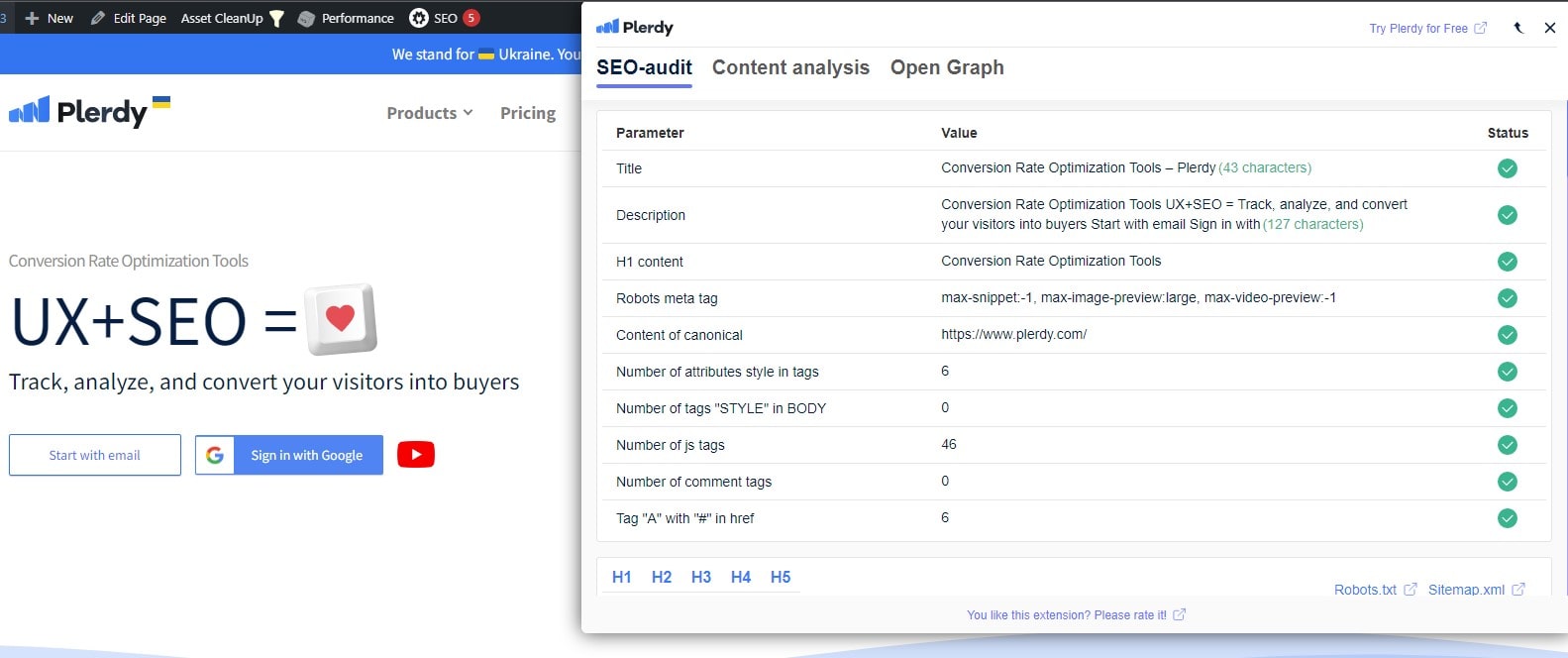
Once your comprehensive SEO audit draws to a close, it’s time to switch gears – you’re on to crafting a robust action plan. Picture yourself managing an online plant nursery. Your SEO audit revealed strengths to maintain, weaknesses to improve, and opportunities to seize. So now, let’s get down to business.
Your action plan should be tailored to your audit results, ensuring the following steps are included:
- Address critical issues first.
- Capitalize on strengths.
- Explore untapped opportunities.
If your audit showed slow page loading times, that’s a red flag. However, you are working on solutions such as optimizing images or reducing server response time. A smooth user experience can pave the way for better rankings and increased traffic.
Next, leverage your strengths. For example, your audit may have highlighted that your blog posts on plant care are a hit with organic traffic. To maintain your strong position, Continue producing high-quality, keyword-optimized content on this topic.
Finally, venture into new territory by exploiting untapped opportunities. For example, your audit showed that you must rank for ‘indoor air purifying plants’ despite its high search volume. Craft compelling content around this topic to attract new visitors.
In a nutshell, creating an SEO action plan is a crucial step that takes the valuable insights gleaned from your audit and translates them into an actionable roadmap. So keep an eye on your SEO journey – after all, every step you take can lead you closer to blossoming success in the online plant nursery space.
18. The Importance of Regular SEO Audits
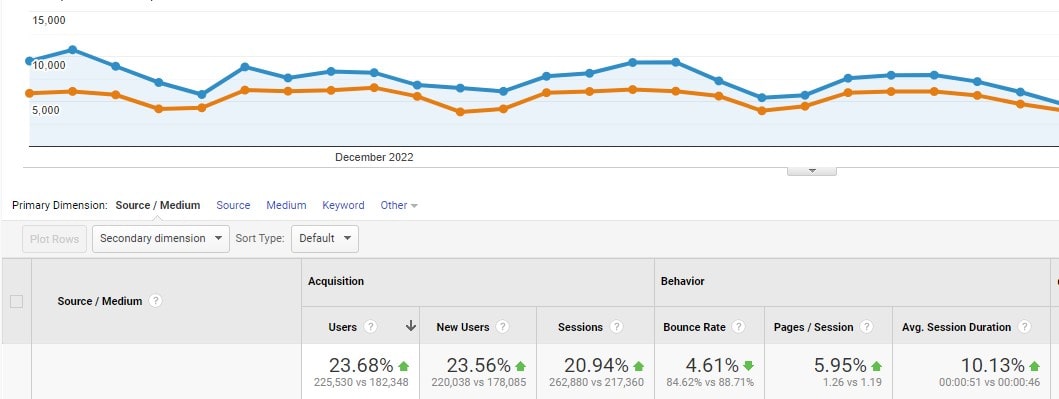
Imagine steering a bustling online gourmet coffee shop. You understand that SEO is not a one-and-done deal – it’s an ongoing process that demands regular check-ins. This is where regular SEO audits come into play, serving as the compass to guide your SEO strategy.
Regular SEO audits provide invaluable benefits, including:
- Catching issues before they escalate.
- Keeping abreast of algorithm updates.
- Staying ahead of the competition.
Firstly, regular audits act like a safety net – catching issues before they spiral out of control. For example, if your audit reveals a sudden drop in organic traffic on a popular page, you can immediately investigate, pinpoint the problem, and implement a fix. This proactive approach saves you from bigger headaches down the line.
Secondly, staying updated with search engine algorithm changes is a must. Google’s algorithms are notorious for their frequent tweaks. Regular audits ensure your website stays aligned with these changes, maintaining your visibility in the search results.
Lastly, staying ahead in the competitive gourmet coffee market necessitates a pulse on your competitors’ SEO strategies. Regular audits help you identify what they’re doing right and where they’re lagging, allowing you to adjust your approach.
Conducting regular SEO audits is more than just a checkbox on your digital marketing checklist. Instead, it’s a crucial step in your SEO journey that keeps your online coffee shop thriving, attracting coffee lovers, and serving up the finest brews on the digital high street.
Bottom Line
Concluding this insightful journey, the “18-Step SEO Audit Checklist” has armed you with a powerful toolkit for amplifying your website’s performance.⚡ SEO audit isn’t a one-and-done chore; it’s a continual journey for your website’s upkeep and optimization.
This checklist has guided you through critical SEO facets – from fixing technical glitches, polishing content, and optimizing pages to strengthening the security of your website. As a result, every site can reap substantial benefits, whether it’s a high-traffic e-commerce hub or a blossoming blog. In the constantly evolving digital marketing landscape, staying updated is the key.
With tools like Plerdy, you can streamline this task. Its comprehensive UX & SEO analysis empowers you to spot patterns, track progress, and benchmark your website against industry standards. If you’ve not tried Plerdy yet, now is a good time to dive in and discover its potential for your SEO journey. So, here’s to embracing a future filled with SEO success. Start leveraging the “18 Step SEO Audit Checklist in 2023” today – and watch as your website climbs to the top of SERPs! ⚡
